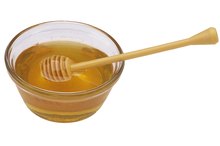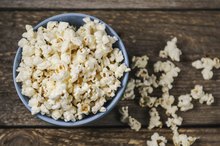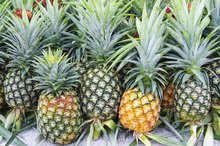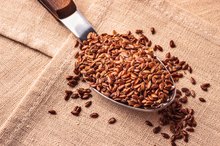What Foods Contain Policosanol?
Given our couch potato lifestyles and busy, fast food filled lives, it's no wonder that high cholesterol and cardiovascular disease are on the rise. But now that you have decided to get healthy, where do you start? One of the hardest things about doing the right thing, healthwise, is figuring out what that right thing is. In the case of policosanol, the manufacturers are claiming miraculous results in lowering cholesterol levels--but the evidence proves otherwise.
What is Policosanol?
Policosanol is a waxy extract of fatty alcohols found in yams, sugar cane, beeswax and wheat.
Cuba produces large amounts of policosanol and does extensive studies on it, as the island has abundant sugar cane farms and many pharmaceutical laboratories. The Cuban government aggressively markets policosanol as an LDL ('bad' cholesterol) reducing supplement.
LDL stands for low-density lipoprotein. Its job in your body is to transport triglycerides and cholesterol from your liver to all of your peripheral tissues. LDL does this by helping fats and cholesterol move through your bloodstream, which is water-based. Your levels of LDL are measured by your doctor because high levels of LDL in your blood can point to potential problems that could develop, like cardiovascular disease.
The Cuban government claims that policosanol supplements will help lower LDL cholesterol levels by 10 to 30 percent. Many people in Cuba believe that policosanol is a cure-all, much the same way Americans see vitamin C, and take the capsules as part of their daily vitamin regimen.
Sugar Cane
List of Foods With High Dextrose
Learn More
Most policosanol is extracted from sugar cane, which is native to Asia, though the majority of the world's sugar cane is grown in Brazil, followed by India. In those countries, sugar cane is grown to produce sugar and other sugar products like cane syrup. Sugar cane is characterized by thick, fibrous, jointed stalks that grow anywhere from six to 19 feet tall.
Yams
Yams (not to be confused with sweet potatoes, which are a different species) have a rough, hard-to-peel skin and a softer inside that can be white, yellow, pink or purple. They are a food staple in West Africa and New Guinea. Yams have a lower glycemic index than potatoes. Policosanol can be extracted from yams, but in lower levels than from sugar cane.
Wheat
Japanese Sweet Potato Nutrition
Learn More
According to research done at Oklahoma State University in July 2005, different varieties of wheat grown under the same conditions can have very different levels and types of policosanol. Wheat bran has more policosanol that wheat germ, or wheat flour. All in all, though, wheat is not as good a source of policosanol as sugar cane or yams. Because of trade issues between Cuba and the United States, most policosanol supplements sold in America are made from wheat and beeswax.
Beeswax
Though not used as food for humans, beeswax--the natural wax that honey bees make in their hives--is a natural source of policosanol, but its effectiveness in lowering LDL levels is even less than that of policosanol derived from wheat.
Related Articles
References
Resources
Writer Bio
Emmy-award nominated screenwriter Brynne Chandler is a single mother of three who divides her time between professional research and varied cooking, fitness and home & gardening enterprises. A running enthusiast who regularly participates in San Francisco's Bay to Breakers run, Chandler works as an independent caterer, preparing healthy, nutritious meals for Phoenix area residents.








